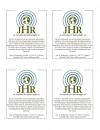Friday, June 13, 2008
Article #5 from Volume 1, Issue 2: The Many Places of Immigration
“Brain Drain in the Philippines”
Nari Corley-Wheeler
IN THE 1970s, THE UNITED STATES HAD A NURSING SHORTAGE. To compensate the US recruited nurses and doctors from the Philippines. IN THE 21ST CENTURY, THE PHILLIPINES IS HAVING A NURSING SHORTAGE. The Philippines must face new health care challenges with the assistance of under-qualified doctors and nurses.
As the demand for nursing in the US is growing rapidly, Philippine candidates are vying for greater economic opportunities regardless the detrimental consequences in their country. As 15,000 Nurses from the Philippines graduate and obtain their licensure, only 1/3 of them remain within their borders.
The appeal to working abroad is multifarious: higher wages, improved standard of living, and an easier and expedited immigration process are each provided visa vie a nursing career.
Unfortunately, the wave of nurses exiting the Philippines will leave the populace in this developing country at a disadvantage in the future as the nurses leaving are the most professional and well-established ones. Experienced nurses are invaluable to any healthcare system as they are the ones educating and preparing the next waves of nurses to come.
With a dramatic loss of nurses in the Philippines, various diseases are ripe for climbing up the charts. Currently, Tuberculosis is one of the greatest causes of death in the Philippines with an astounding rate of TB counts giving the country a rank of 9th worldwide With a presence of educated and experienced nursing, TB could be largely addressed and treated with a larger combative force present (i.e. nurses, not to mention doctors).
This is not an isolated problem in the Philippines, but has become a common thread in Southeast Asian countries and it is to be expected as wages for nursing in the US are about 10x more than in the Philippines. On average, nurses in the US make around $50,000 per year, which would take a nurse in the Philippines ten years to earn.
Nursing schools in the US are intentionally under-funded in terms of their facilities and staff limiting the amount of US students eligible for entry. US nursing schools turn away 42,866 qualified applicants each year from Baccalaureate and Masters’ programs and have limited slots to allot room for doctors and nurses abroad (AACN).
The stakes are high for nurses in the Philippines: whether to stay and aid their developing country while withstanding lower wages than what they’re worth abroad or to leave their country in the throttle of health care crisis in the years to come will be an impending question for the current generation of Nurses.
Nari Corley-Wheeler
IN THE 1970s, THE UNITED STATES HAD A NURSING SHORTAGE. To compensate the US recruited nurses and doctors from the Philippines. IN THE 21ST CENTURY, THE PHILLIPINES IS HAVING A NURSING SHORTAGE. The Philippines must face new health care challenges with the assistance of under-qualified doctors and nurses.
As the demand for nursing in the US is growing rapidly, Philippine candidates are vying for greater economic opportunities regardless the detrimental consequences in their country. As 15,000 Nurses from the Philippines graduate and obtain their licensure, only 1/3 of them remain within their borders.
The appeal to working abroad is multifarious: higher wages, improved standard of living, and an easier and expedited immigration process are each provided visa vie a nursing career.
Unfortunately, the wave of nurses exiting the Philippines will leave the populace in this developing country at a disadvantage in the future as the nurses leaving are the most professional and well-established ones. Experienced nurses are invaluable to any healthcare system as they are the ones educating and preparing the next waves of nurses to come.
With a dramatic loss of nurses in the Philippines, various diseases are ripe for climbing up the charts. Currently, Tuberculosis is one of the greatest causes of death in the Philippines with an astounding rate of TB counts giving the country a rank of 9th worldwide With a presence of educated and experienced nursing, TB could be largely addressed and treated with a larger combative force present (i.e. nurses, not to mention doctors).
This is not an isolated problem in the Philippines, but has become a common thread in Southeast Asian countries and it is to be expected as wages for nursing in the US are about 10x more than in the Philippines. On average, nurses in the US make around $50,000 per year, which would take a nurse in the Philippines ten years to earn.
Nursing schools in the US are intentionally under-funded in terms of their facilities and staff limiting the amount of US students eligible for entry. US nursing schools turn away 42,866 qualified applicants each year from Baccalaureate and Masters’ programs and have limited slots to allot room for doctors and nurses abroad (AACN).
The stakes are high for nurses in the Philippines: whether to stay and aid their developing country while withstanding lower wages than what they’re worth abroad or to leave their country in the throttle of health care crisis in the years to come will be an impending question for the current generation of Nurses.
Posted by
UWJHR
at
8:52 AM
|
Labels: brain drain, human rights, immigration, nari corley-wheeler, newsletter, philippines, university of washington, uwjhr
Labels: brain drain, human rights, immigration, nari corley-wheeler, newsletter, philippines, university of washington, uwjhr
0 comments:
Post a Comment







